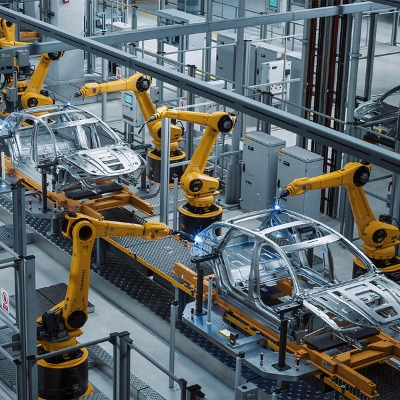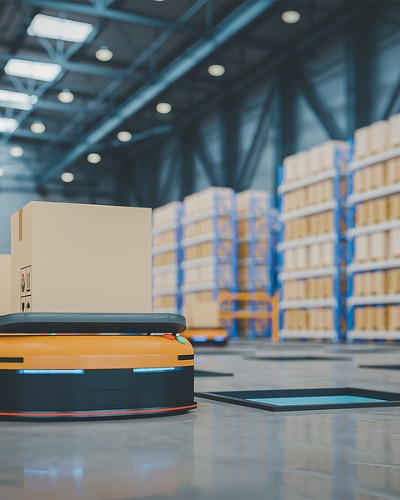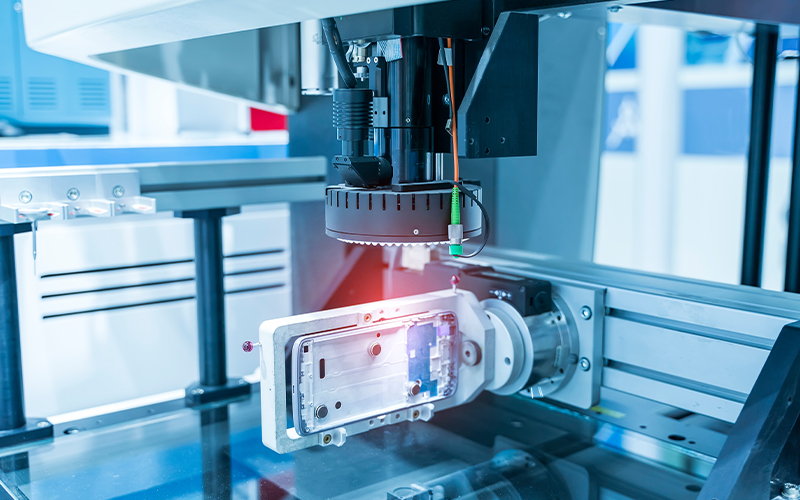Traditional automation has transformed manufacturing, but it often relies on strict, pre-set logic. Today, the fast-paced and ever-changing industrial technology landscape is setting the stage for a smarter future.
Artificial intelligence (AI) is a key player in this transformation. Modern AI-driven systems go beyond repetitive tasks to handle complex decision-making, predictive analysis, and adaptive learning. Because of this, it is empowering organizations to unlock unprecedented levels of performance and adaptive intelligence.

With global automation investments projected to grow exponentially, it’s no secret that the competitive edge belongs to those who leverage intelligent automation effectively. So, let’s explore how AI redefines industrial efficiency—and why now is the time to adopt it.
1. Predictive Maintenance Goes From Reactive to Proactive
One of the biggest industrial advantages of intelligent systems is the ability to predict failures before they happen. Instead of waiting for machinery to break down — or performing unnecessary scheduled maintenance — AI-enabled equipment can analyze real-time sensor data to detect anomalies and identify patterns. From there, you can get real-time performance data and intervention strategies to minimize unexpected production interruptions or downtime.
2. Intelligent Vision Systems Redefine Quality Control
Machine vision powered by deep learning algorithms has revolutionized quality inspection processes. These systems can now detect microscopic defects imperceptible to human inspectors and process thousands of items per hour with near-perfect accuracy. They continuously learn and adapt to new product specifications to provide full data analytics on quality trends.
3. Machine Learning Speeds up Production Lines

Machine learning algorithms can analyze production flow and adjust in real time to maximize throughput and minimize bottlenecks. This enables smart factories to respond dynamically to changes in demand, supply chain disruptions, or equipment failures. In a time of labor shortages and a skills gap, it’s essential to output without additional labor. And the ability to reduce waste and maximize energy consumption is an added bonus for companies.
4. Autonomous Robots Add Flexibility
The autonomous mobile robot (AMR) market is projected to reach $14.4 billion by 2027, demonstrating the technology’s transformative potential. Modern AMRs use sophisticated path-finding algorithms to navigate and adapt to environments in real-time. They have become especially handy in warehousing and logistics settings because they can optimize material handling and seamlessly integrate with existing workflow management systems. Advances in humanoid and mobile manipulation robots are also opening fresh opportunities for the future.
Navigating the Intelligent Automation Landscape
As industries continue to evolve, intelligent automation solutions will shift from being a competitive advantage to a fundamental operational necessity. Those curious about the newest advancements in industrial automation and AI should consider seeing these solutions firsthand at the Automate Show! This free trade show covers a complete range of industrial automation and tech, allowing you to explore the innovations shaping our industrial landscape. For more details, visit automateshow.com.











